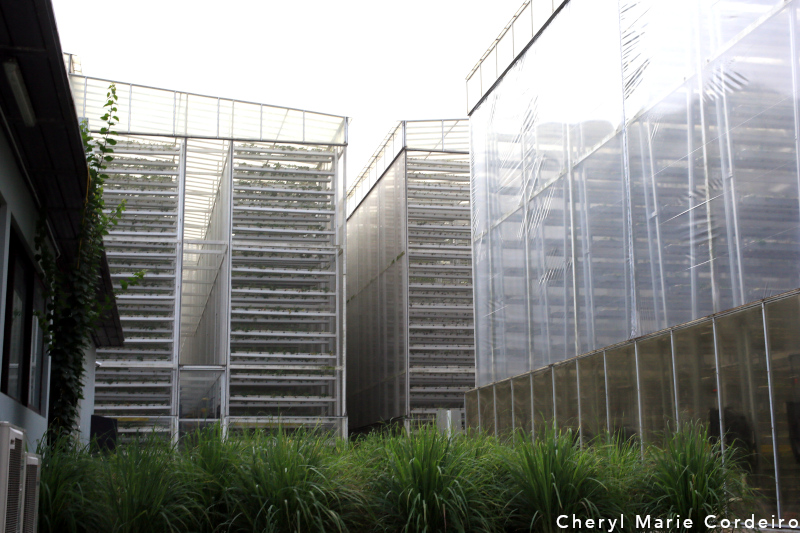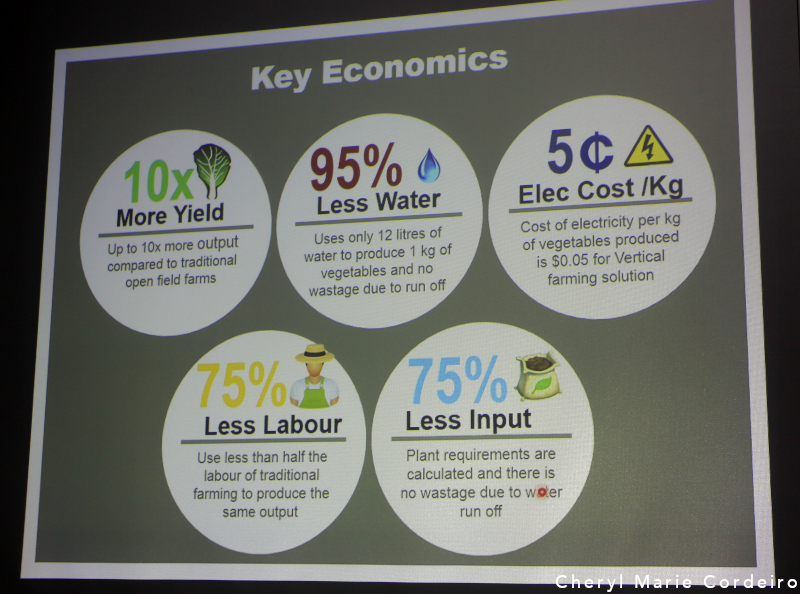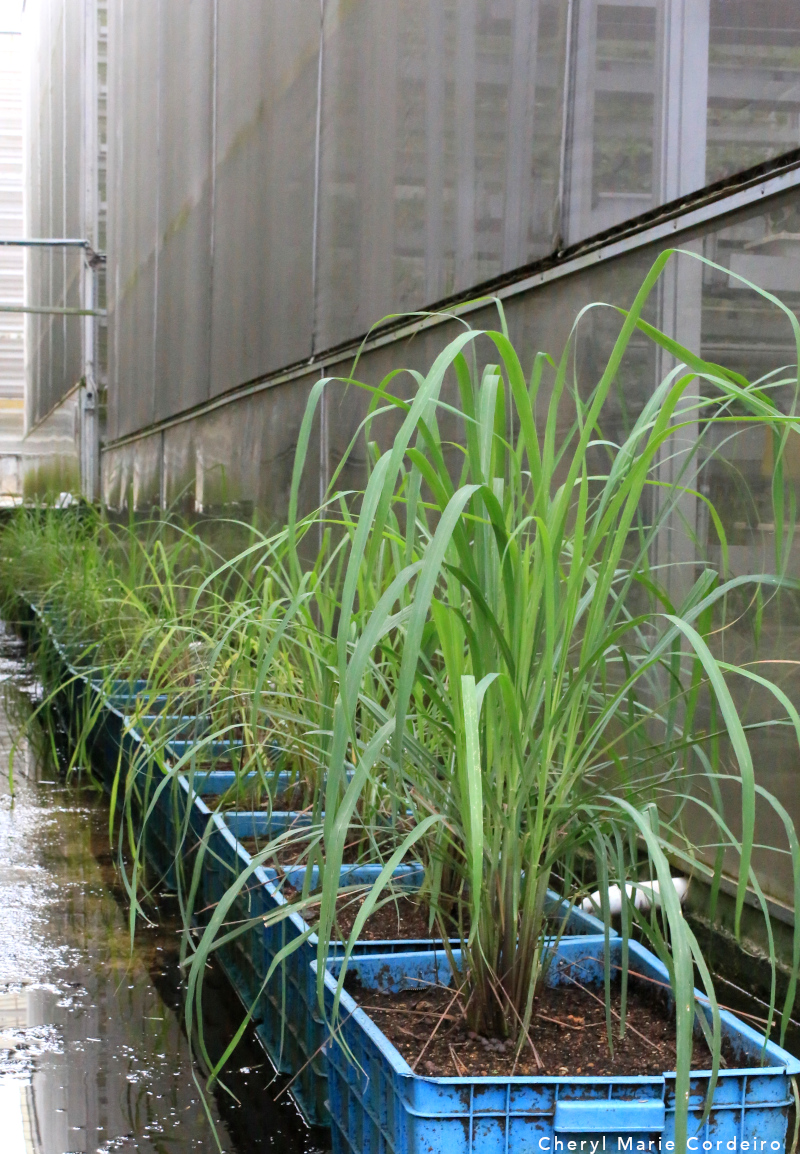From 2016, standing in a group discussion with Jack Ng, who is an engineer, and the Founder of Sky Greens Singapore. Sky Greens was founded in 2012.
Text & Photo © JE Nilsson & CM Cordeiro 2021
The current Horizon Europe Work Programme 2021-2022 for Food, Bioeconomy Natural Resources, Agriculture and Environment [1] acknowledges a need to address the complex relationships between energy use in food systems, food system productivity and energy resource constraints. Product type, mode of transport, food waste, energy-related food system greenhouse gas (GHG) emissions, and energy efficiencies in geographies of production along with economies of scale are some of the interacting variables in the food-energy network [2,3]
In Sweden, about 26% of the greenhouse gases emitted come from agricultural activities [2]. Traditional farming practices and food production techniques concurrent with urbanization and globalization are energy intensive. With concurrent urbanization, globalization and changes in demography, the importance of energy use in food systems has become a global food security concern [3], particularly when some studies have shown that crop yields increase in close association with energy inputs [4].
The European regional concerns reminded me of a visit to Sky Greens in Singapore in 2016. I was in Singapore to attend the Responsible Business Forum conference held at Marina Bay Sands, and I had the opportunity too at the time, to visit the world´s first low carbon, hydraulic driven vertical vegetable farm and meet its Founder, Jack Ng.
Sky Greens uses green energy solutions such as harnessing solar power and using a hydraulic water-driven vertical farming system, in producing a variety of vegetables that are popular on the Singapore market. It is the innovation hub of its holding company, Sky Urban Solutions Holding Pte Ltd, and it strives continuously to provide integrated innovative urban agriculture solutions towards zero carbon emissions in urban farming.
Founded in 2012 and located at Lim Chu Kang at the heart of Singapore´s agricultural industry, Sky Greens is part of Singapore´s 2030 Green Plan ambitions that charts concrete targets in achieving a long-term net zero carbon emissions aspiration in accordance to the UN´s 2030 Sustainable Development Agenda and the Paris Agreement. The vertical farming ambitions of Sky Greens is also part of Singapore´s 2030 food plan to secure 30% of its nutritional needs by local production by 2030.
Characteristic of Singapore´s enterprising spirit in early technology adoption, Sky Greens has a patented modular structure, vertical farming system that consists of rotating tiers of growing troughs on an A-shaped aluminum frame. Standing at 9 meters tall with 38 tiers of growing troughs, vegetables are grown in a perfect media of soil and hydroponic solution.
The system is scalable and can be built over rivers, reservoirs and on top of housing buildings in Singapore. It allows cultivation in non-arable lands and provides 10 times more yield per unit of land area than traditional farming methods. The controlled environment enables longer growth and harvest periods for the plants, ensuring a steady food supply with consistent high quality produce.
The Sky Greens system is also energy and water saving. Using natural sunlight for growing the vegetables, the growing troughs rotate by use of a hydraulic water-driven system that leverages the flow of water and gravity. It takes only 40W electricity (the equivalent to one light bulb) to power one 9 meters tall tower. The water used for plant growing is contained in an underground closed loop system that is recycled and reused. Half a litre of water is required to rotate the 1.7 ton vertical structure.
Since 2012, vertical farms have established themselves around the world, using different methods and technologies. In 2020, a fully wind-powered, hydroponic farm that grows its plants with LEDs opened its operations in the outskirts of Copenhagen, Denmark. Nordic Harvest, in partnership with YesHealth Group of Taiwan, aims to provide 1000 metric tons of greens a year locally. With similar farms covering an area the size of 20 soccer fields, it is expected that vertical farming in Denmark could fully supply the country’s entire demand for greens in the near future.
In Singapore, the Sky Greens concept has been feasibility tested on rooftops of Housing Development Board (HDB) buildings, schools and multi-storied carparks. With restaurants cultivating their own vegetables and herbs in their own garden, Singapore can look forward to eating locally produced food in short food supply chains. Sky Greens currently sell their produce to the local supermarket chain NTUC FairPrice, and exports their produce to China, Malaysia, Thailand and Vietnam.
Energy practices and societal transformation takes time and strategic co-management practices. From the perspective of energy efficiency in crop production, urban vertical farming practices address some core objectives of societal energy transition, which is to maximize the use of natural, clean energy sources in producing safe foods of high quality in limited, non-arable lands.
Apart from energy efficiency in crop production, vertical farm systems are also crucial in the food value network of short food supply chains (SFSCs), that places consumers in closer contact to food producers. SFSCs also have the economic advantage of cutting costs in transportation, eliminating unnecessary waste in food packaging and empowering consumers in their food choices [5,6]. Studies have indicated that purchasing organic vegetables in a highly centralized community-supported agriculture system is more energy efficient than personal farm stand trips that requires more than 6km of vehicle travel [7]. Thus, reducing steps in the supply chain and eliminating vehicle trips for food purchases can help achieve potential benefits to energy efficiency and increased food security.

Responsible Business Forum 2016, Singapore, Marine Bay Sands.





Inspired by locally grown vegetables, I found myself buying some at a neighbourhood fruits and vegetables shop in Singapore after my visit to Sky Greens.
References
[1] EU Horizon Work Programme 2021-2027. Internet resource at https://ec.europa.eu/info/horizon-europe_en. Retrieved 25 Feb. 2021.
[2] Molin, E. and Martin, M. (2018). Assessing the energy and environmental performance of vertical hydroponic farming, Report Nr C299, VL Swedish Environmental Research Institute, Stockholm, Sweden. Internet resource at https://bit.ly/2Nuqrkp. Retrieved 25 Feb. 2021.
[3] Pelletier, N., Audsley, E., Brodt,S., Garnett, T., Henriksson,P., Kendall, A., Kramer, K. J., Murphy, D., Nemecek, T. and Troell, M. (2011). Energy intensity of agriculture and food systems, The Annual Review of Environment and Resources. Internet resource at https://bit.ly/3aWlARX. Retrieved 25 Feb. 2021.
[4] Karkacier, O., Gokalp Goktolga, Z., & Cicek, A. (2006). A regression analysis of the effect of energy use in agriculture. Energy Policy, 34(18), 3796-3800.
[5] Sellitto, M., Vial, L., & Viegas, C. (2018). Critical success factors in Short Food Supply Chains: Case studies with milk and dairy producers from Italy and Brazil. Journal of Cleaner Production, 170, 1361-1368.
[6] Kawecka, A., & Gębarowski, M. (2015). SHORT FOOD SUPPLY CHAINS – BENEFITS FOR CONSUMERS AND FOOD PRODUCERS. Journal of Agribusiness and Rural Development, 9(3), Journal of Agribusiness and Rural Development, 09/30/2015, Vol.9(3).
[7] Coley, D., Howard, M. & Winter, M. (2009). Local food, food miles and carbon emissions: A comparison of farm shop and mass distribution approaches. Food Policy, 34, 150-155.
